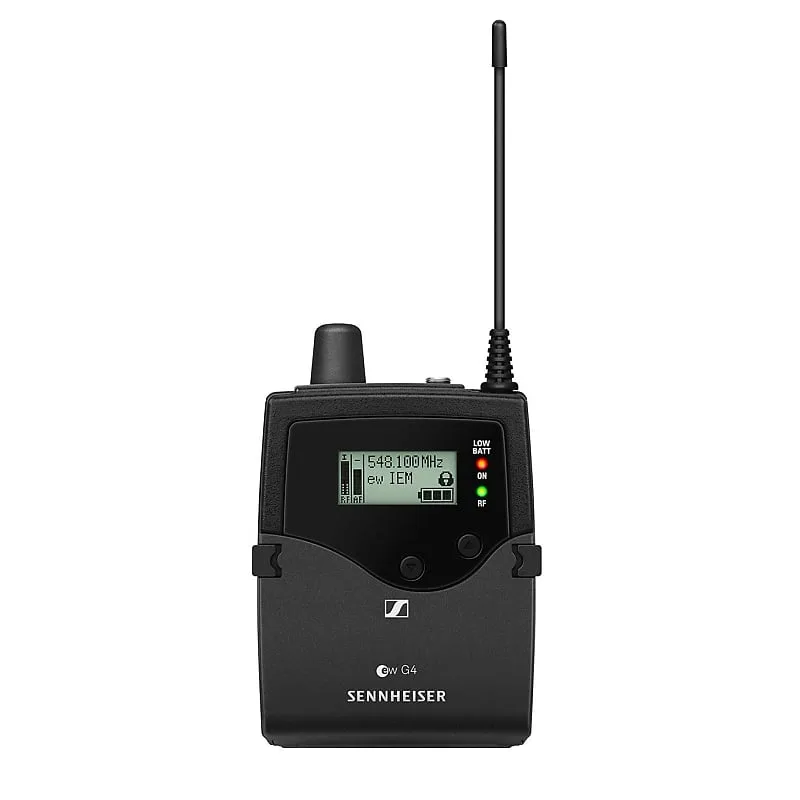Wireless IEM systems are available in wired and wireless formats, with wireless being more popular due to their mobility. These systems consist of a transmitter, receiver, and earphones. The transmitter sends the audio of the performance to the receiver, known as the monitor mix, which is then heard through the earphones. In-ear monitors (IEMs) differ from earbuds as they contain tiny drivers that convert electrical signals into sound. While earbuds typically use dynamic drivers, IEM designs offer more accuracy and detail in sound reproduction. Additionally, some IEMs can be Bluetooth-enabled, allowing for a wireless connection to audio devices.
Understanding Wireless Iem Systems
Wireless IEM systems are an essential tool for musicians and performers, allowing them to have control over their in-ear monitoring experience. By understanding the components and functionality of these systems, you can make informed decisions to enhance your live performances. Let’s explore the world of wireless IEM systems and how they work.
Components Of Wireless Iem Systems
Wireless IEM systems consist of three main components:
- The Transmitter: The transmitter sends the audio signal to the receiver from the sound source, such as a mixer or audio interface. It uses radio frequencies to transmit the signal wirelessly.
- The performer wears the receiver and receives the audio signal from the transmitter. It converts the wireless signal back into audio and sends it to the earphones.
- The Earphones: The earphones are the final part of the wireless IEM system. They deliver the audio directly to the performer’s ears, allowing them to hear their performance or a customized mix.
How Wireless Iem Systems Work
Now, let’s explore how these components work together:
- The transmitter takes the audio signal and encodes it into a digital format suitable for wireless transmission.
- It then broadcasts the encoded signal to the receiver using radio waves.
- The earphones play audio encoded into a format that can be heard by decoding the receiver’s radio waves.
- The earphones deliver the audio directly to the performer’s ears, providing them with a personalized and high-quality monitoring experience.
Wireless IEM systems offer numerous benefits, such as greater mobility on stage, freedom from cables, and the ability to create custom monitor mixes tailored to individual preferences. They provide performers with the flexibility and control they need to deliver exceptional live performances.

Credit: www.ebay.com
Choosing The Right Wireless Iem System
Choosing the right wireless IEM system involves considering budget, range, and audio quality. With three main components – transmitter, receiver, and earphones – wireless in-ear monitors provide the flexibility and mobility musicians need for their performances.
Budget Considerations
The selection of an appropriate wireless IEM system heavily depends on budgetary constraints. A budget will help you focus and ensure you get the most for your money. Remember that wireless IEM systems can range in price, with more expensive options offering additional features and higher audio quality. However, there are also budget-friendly options available that still provide excellent performance. Consider how much you are willing to invest in your wireless IEM system and prioritize essential features for your needs.
Key Features To Look For
When choosing a wireless IEM system, there are several key features that you should look for to ensure optimal performance and convenience. These functions can improve your overall experience and simplify system operation. Here are some important factors to consider:
- Frequency Range: Choose a wireless IEM system with a wide frequency range to avoid interference and ensure a clear and reliable signal.
- Number of Channels: To avoid busy frequencies and to swap between them, look for a system with many channels.
- Signal Stability: Ensure the wireless IEM system provides a stable signal with minimal dropouts or interference.
- Battery Life: Consider how long the system’s battery will last, particularly if you intend to use it frequently. Look for systems with long-lasting batteries or the option to use rechargeable batteries.
- Compatibility: Check if the wireless IEM system is compatible with your existing audio equipment, such as mixers and instruments.
- User-Friendly Interface: Opt for an intuitive and easy-to-use system that allows you to adjust quickly and efficiently.
- Comfortable Earphones: Consider the comfort and fit of the included earphones, as you’ll be wearing them for extended periods during performances. Considering these key features, you can make an informed decision and choose a wireless IEM system that suits your specific needs and preferences.
Remember to compare different options within your budget range and read customer reviews to ensure you make the right choice. In conclusion, carefully weighing your budget and the most crucial characteristics is necessary while selecting the best wireless IEM system. It is possible to locate a wireless IEM system that satisfies your needs and improves your audio experience by establishing a budget and looking for qualities like frequency range, signal stability, and an inviting interface.
Comparing Wireless Iem Systems
Several options are available when choosing the right wireless in-ear monitor (IEM) system. Here, we compare the key features and specifications of some popular wireless IEM systems to help you make an informed decision.
Sennheiser Xsw Iem
The Sennheiser XSW IEM is renowned for its exceptional sound quality and reliable performance. Professional musicians and live performers would find it ideal as it delivers high-fidelity sound reproduction and adaptability at $229 to $599.
Galaxy Audio Wireless
The Galaxy Audio Wireless IEM system is priced from $399 to $999, providing a wide range of options for users with varying budgets. It is well-liked for indoor and outdoor performances because of its sturdy construction and user-friendly design.
Noble Audio Fokus Mystique
The Noble Audio Fokus Mystique True Wireless IEMs, with a price range of $359 to $1,499, exude luxury and advanced technology. Known for its premium audio performance and sleek design, audiophiles and discerning musicians favor the Noble Audio Fokus Mystique.
Phoenix Pro Uhf Mono Dual
The Phoenix Pro UHF Mono Dual wireless in-ear monitor system offers affordability without compromising quality. With prices ranging from $254.99 to $459.99, it provides a cost-effective solution for musicians and performers seeking reliable wireless monitoring. Whether you are looking for cutting-edge technology, superior sound quality, or budget-friendly options, a wireless IEM system is available to suit your specific needs and preferences.

Credit: www.amazon.com
Faqs About Wireless Iem Systems
When it comes to wireless IEM systems, you may wonder if they can be Bluetooth-enabled or how they work. In-ear monitors can be wireless or wired, providing mobility and freedom of movement during performances. These systems provide the optimal performance experience by delivering the monitor mix through earbuds, a receiver, and a transmitter.
Wireless Vs. Wired Iems
In the world of in-ear monitoring systems, you can choose between wireless and wired options. Understanding the differences can help you make the right decision for your needs.
Bluetooth Capability Of Items
Many wireless IEM systems have Bluetooth capability, allowing you to connect them to other devices without additional cables. This feature offers convenience and flexibility, especially for those who want to use their IEMs with smartphones or tablets.
Difference Between Earbuds And Items
While earbuds and IEMs may seem similar, the two have some fundamental differences. Earbuds are generally more affordable and offer a more casual listening experience. On the other hand, IEMs are designed for professional use, providing superior sound quality and noise isolation. It’s important to consider your needs and preferences when choosing between them.
Now that we’ve covered these frequently asked questions about wireless IEM systems, you should better understand the key differences and features to consider.
Whether you opt for wireless or wired, with or without Bluetooth capability, or choose between earbuds and IEMs, remember to prioritize your specific needs and requirements. Happy monitoring!

Credit: www.amazon.com
Frequently Asked Questions For Wireless Iem System
Can I Be Wireless?
Yes, in-ear monitors (IEMs) can be wireless or wired. Wireless IEMs are commonly used due to their mobility.
How Do Wireless In-ear Monitors Work?
Wireless in-ear monitors consist of a transmitter, receiver, and earphones. The transmitter sends the performance audio to the receiver connected to the earphones. It allows for mobility and a personalized monitor mix. In-ear monitors can be wireless or wired, but wireless is more common for convenience.
Can Iems Be Bluetooth?
Yes, IEMs can be Bluetooth. In-ear monitors can be wireless or wired, with wireless options being popular due to mobility. Wireless In-ear monitors work through a transmitter, receiver, and earphones to send audio for the monitor mix. Additionally, Bluetooth IEMs use DAC and AMP chips in each earpiece for precise synchronization.
What Is The Difference Between Earbuds And Iems?
Earbuds are typically small speakers in the outer ear, while IEMs (in-ear monitors) go deeper into the ear canal. IEMs use tiny drivers to convert electrical signals into sound and often use balanced armature technology, providing better audio fidelity than earbuds.
Conclusion
Wireless in-ear monitor systems offer freedom and mobility for performers and sound engineers, with options available at different prices. Wireless IEMs become a popular choice for musicians and audio professionals as technology advances. With various features and prices, finding the best wireless in-ear monitors to suit your needs and budget is easier than ever.

